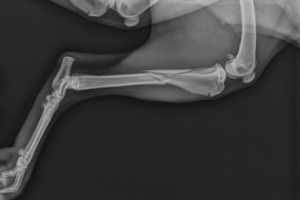So you want to be the CIO of an NHS Trust? Here’s what you need to know

SJ Leatherdale, Partner and Head of the Healthcare and Life Sciences Practice, talks to interim CIO John Davidson, about how to become the chief information officer in an NHS trust
Like so many organisations across both the private and public sector, the NHS is undergoing widespread digital transformation with the aim of making healthcare more efficient and cutting costs. Driving the implementation of this transformation – whether it is born from the NHS Long Term Plan or directed by NHSX – are the CIOs of NHS Trusts. With increasing demands to upgrade systems, transition to digital medical records and to online GP bookings, as well as embedding privacy and security throughout all of this, the role of the CIO has never been more important for the NHS.
I spoke to interim CIO John Davidson, about his experience working in the NHS and to find out what it takes to become a CIO in the sector. John has over 20 years’ experience in IT leadership positions, including CIO for Barnet Enfield and Haringey Mental Health NHS Trust, chief technology officer at Dr Foster and CIO at Harmoni HS Ltd. This is his advice for any aspiring NHS CIOs.
1. Being the CIO of an NHS trust is the same as any other leadership role
John began by saying, “From the point of view of what a CIO actually does, being a CIO in an NHS Trust is no different from being a CIO anywhere else – it’s a leadership role”. They have to act and behave like an archetypal leader: setting and sharing a vision to ensure the team exhibits the appropriate behaviours and values of the organisation. The primary task of a CIO is to establish and ultimately deliver a digital strategy. To do this, John suggested that, “they build a strong team by setting relevant objectives, delegating tasks and holding managers accountable to deliver what is expected. For their own role, the CIO needs to exercise accountability to key stakeholders – both within and outside the organisation.”
A word of advice from John to any aspiring leader is to, “Build relationships down, across, up and outside the organisation”. Anyone in this position is often invited to events and networking opportunities. Choosing to attend these (even if they are outside of working hours) to develop relationships and build alliances is time consuming but pays dividends.
2. It’s not all about the technology
When rising through the ranks to senior management roles, and ultimately to the c-suite, a burgeoning CIO will find that the role is less and less about technology, and more about strategy, leadership and governance. “Yes, technology (the ubiquitous ‘digital’) is important and yes, the CIO needs to know what technology can do for the organisation, but the role is more strategy-focused rather than engaging in the groundwork”, said John. And for this reason, not all CIOs are pure technologists, they do come from other disciplines. In this leadership role, the insight of what technology could do for an organisation and how to assemble the people and resources to do this takes priority over detailed technical knowledge of systems and hardware.
3. Be prepared for governance
Unlike the private sector, working in the NHS (and other public sector organisations) means that the CIO needs to be aware of the additional governance involved. There is a high degree of focus on risk management – not only day-to-day risks but also programme and project risk management. “This is not a bad thing in principle, as it is due to the high regulation of the sector, but they should be aware of the risk management processes and how to ensure there are appropriate mitigations in place to report on”, said John. He added that, “this also applies to procurement, as this too has strict regulations”.
A particular governance system across the NHS is the use of committees. Many requests have to be reviewed by this collective decision-making process; even members of the senior leadership team have to gain approval for their decisions. Committees are a core component of the way of working in the NHS due to the strict governance and regulation. In John’s experience, “This regime differs significantly from the way in which private sector commercial companies work.” John shared that, “making the transition from being an autonomous leader to a more collaborative one with shared responsibility may be jolting. To ease this change, and perform well in this environment, take it on as a challenge to improve your presentation and negotiation skills.”
4. The demands are challenging, internally and externally
Most Trusts have immense demands on their IT teams, especially now during this transitionary period towards increased digitisation. The key to managing this is to ensure there is a process to prioritise the demands. With a constant input of work and new demands, there has to be a way of managing the workload otherwise it forces the teams to drop existing projects – or worse, multi-task on a range of projects which degrades productivity. One suggestion John offered to constrain work-in-progress and reduce the need for multi-tasking is to explore the use of a Kanban system, or an Agile working methodology. This will help manage demand, constrain work-in-progress and enable projects to be delivered more consistently.
There are also demands on the CIO from external organisations – something that isn’t so common in the private sector. “There are multiple external stakeholders for the NHS (e.g. STPs, CCGs, NHSD/E/I/X, CQC etc) and anyone that isn’t familiar with these should get up to speed”, John told me, explaining that, “these organisations may impose demands on you which cannot be ignored easily”. All of these organisations are working to improve and develop the healthcare system regionally or nationally and so will be focused on regulating the services to meet set standards.
5. You may not have the resources you need
“Any new CIO will be constrained to work with the resources they inherit – unless there is the opportunity to lobby for additional resources to supplement the team”, said John. In these days of austerity, IR35, financial deficits and constraints on capital spending this is a major challenge.
Also, in terms of resources, a CIO might be overseeing a leadership project, such as undertaking a department reorganisation. For these projects to be carried out, there will undoubtedly be a need for cross-departmental organisation and planning, and consequently pulling of their resources – crucially, people, time and systems. For this, a CIO has to be prepared to work with HR colleagues, and potentially consulting unions, and so they must be familiar with the procedures and processes of other departments (which differ vastly across the NHS).
“If all else fails”, said John “go back to tip 4, and get the organisation to ruthlessly prioritise the workload to a level that can be managed with the resources available”.
One final comment from John: “Don’t forget to have some fun along the way!”
For more information please contact SJ Leatherdale.






